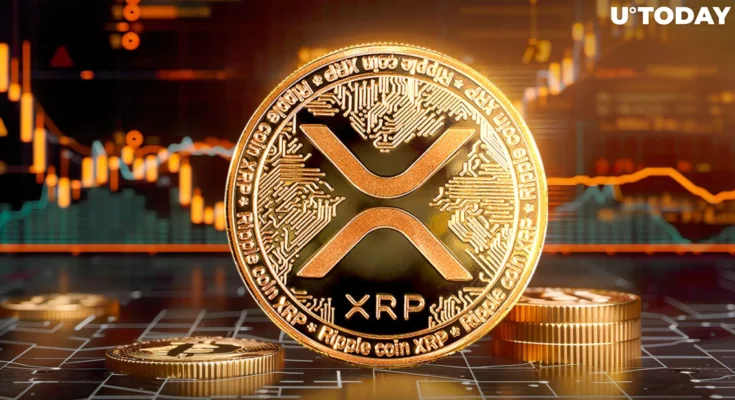Based on the XRPL (XRP Ledger), XRP operates on its blockchain as an independent cryptocurrency. It has been created by Ripple Labs mainly for harmonizing international payments, providing an avenue for transferring funds at the cost, speed, and contact-to-contacts. The old world’s most modern digital currency is not primarily concerned with decentralization (like other cryptocurrencies) or smart contracts, but the ultimate goal is an overhaul of the global financial system.
In this article, one will learn about features, use cases, and future trends of XRP.
What is XRP?
XRP is a digital payment asset that provides a real-time settlement system processing very fast transactions, usually in seconds. XRP was launched in 2012 by Ripple Labs, a tech company based in San Francisco. This asset seeks to become a bridge currency designed for the financial institutions to carry out faster and cheaper cross-border payments than conventional methods like SWIFT.
XRP Ledger uses a consensus protocol known as the XRP Ledger Consensus Protocol, which validates transactions without having to go through the expensive process of mining as in other cryptocurrencies, thereby making it energy-efficient compared to Bitcoin.
Key features of XRP
Fast Transactions
XRP can settle a transaction within a span of 3 to 5 seconds, irrespective of the transfer amount or distance involved by the sender and receiver of the transferred funds.
Low Transaction Costs
Unlike other transaction types, very small charges are levied on the transaction through the XRP Ledger because, in most cases, they are less than $0.01.
Scalability
This XRP Ledger is capable of handling up to 1,500 transactions per second, which is hundreds of times more than Bitcoin and Ethereum, and thus can even scale multi-trillion dollar operations.
Energy Efficiency
Unlike proof-of-work cryptocurrencies, XRP doesn’t rely on mining.
XRP’s Use Cases
Cross Border Payments
XRP is a bridge currency in Ripple’s ODL (On-Demand Liquidity) service. It helps provide speedy settlement and cost-effective international transactions via XRP for financial institutions.
Remittances
Such technology will allow people to send money across borders faster and cheaper rather than waiting in long lines and paying high prices for traditional remittance transfers.
Micro payments
Because of high speed and very low fees, it is quite suitable for micropayments, such as tipping content providers or paying a little online service provider.
Institutional Adoption
Many banks and payment providers like Santander, SBI Holdings, and others have either studied or implemented Ripple’s technology in their payment systems wherein XRP becomes the way to use it.
Benefits of XRP
Partnerships with Financial Institutions: Ripple has collaborated with hundreds of banks and financial institutions in a bid to make XRP more practical and thus increase its numbers.
Liquidity Solutions: By using experience in different fiat currencies, XRP acts as a bridge currency and provides a solution for liquidity issues in banks dealing in different fiats currencies.
Strong Community Support: XRP has a huge, dedicated community actively promoting the adoption and growth of the coin.
Challenges Faced by XRP
However, there are challenges that XRP has had to face:
Regulatory Uncertainty
Ripple’s continuous legal wrangling with the U.S. Securities and Exchange Commission (SEC) on whether XRP is a security or not has created ambiguousness to investors and institutions.
Centralization Issues
Critics contend that Ripple Labs has massive quantities of XRP, controls much of the ecosystem, and this makes the currency less decentralized than Bitcoin or Ethereum.
Competition
XRP faces fierce competition from the growing number of other cryptocurrencies and emerging technologies focused on minimizing cross-border settlement time and cost.
The Future of XRP Here, then, obviously, the future of XRP will depend on the outcome of regulatory decisions and, to a great extent, on the development of partnerships. If Ripple gets away from the legal issues and expands traction in the financial area, XRP could turn out to be a cornerstone of the new payment system at the global level. In addition, with its current targeting of new, emerging markets and remittance corridors from places like Southeast Asia and Africa, the leverage that XRP has in the financial inclusion movement cannot be underestimated.
With the emergence of CBDCs, XRP can also be regarded as an important linking point between those currencies in the evolving digital economy.
Conclusion
XRP will clearly stand out among all other cryptocurrencies because it has revolutionized global payments. With its ultra-fast and low-cost transactions and various strategic partnerships, XRP would change the way magic moves in the world. But this will obviously depend on regulatory clarity and innovation going forward.


